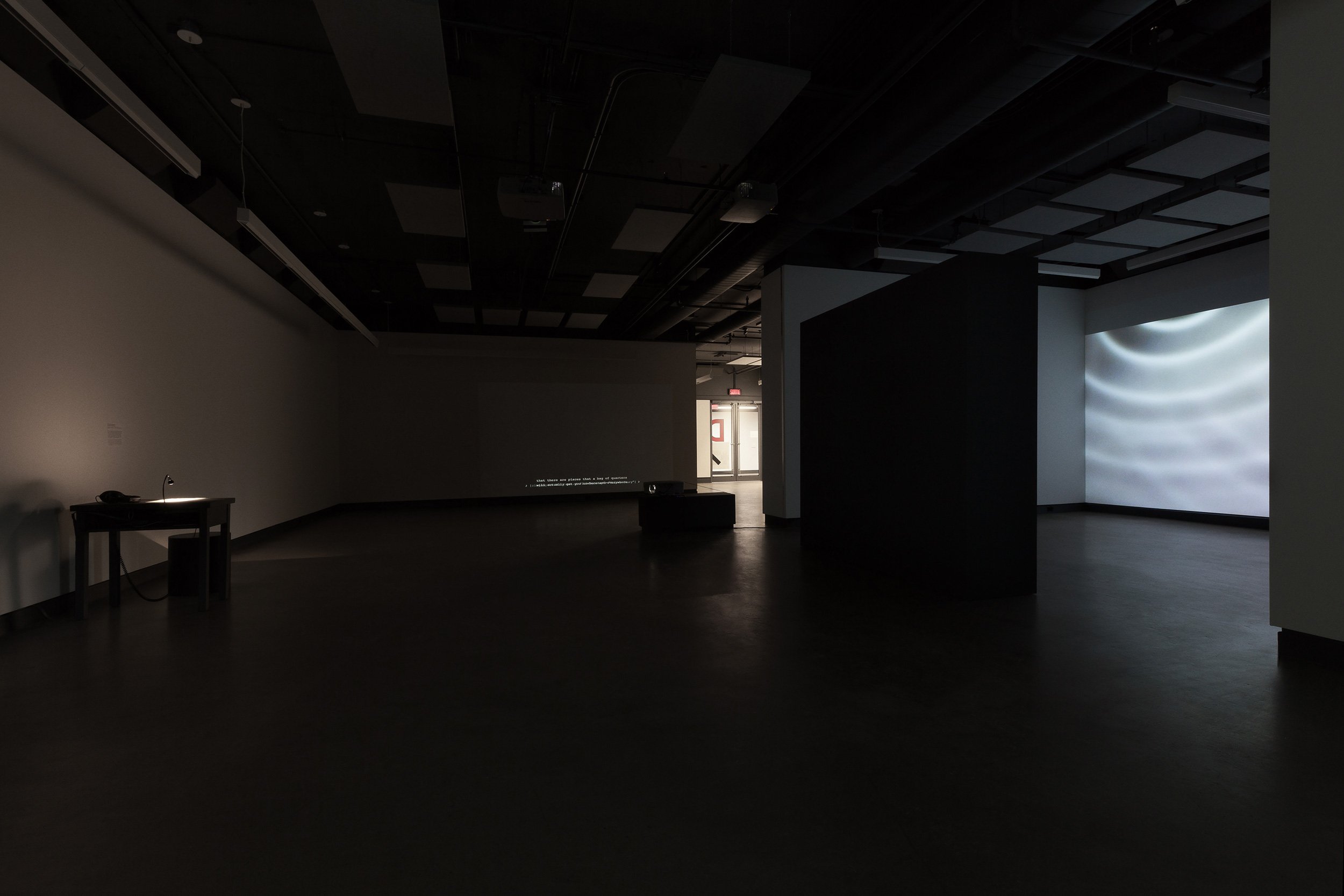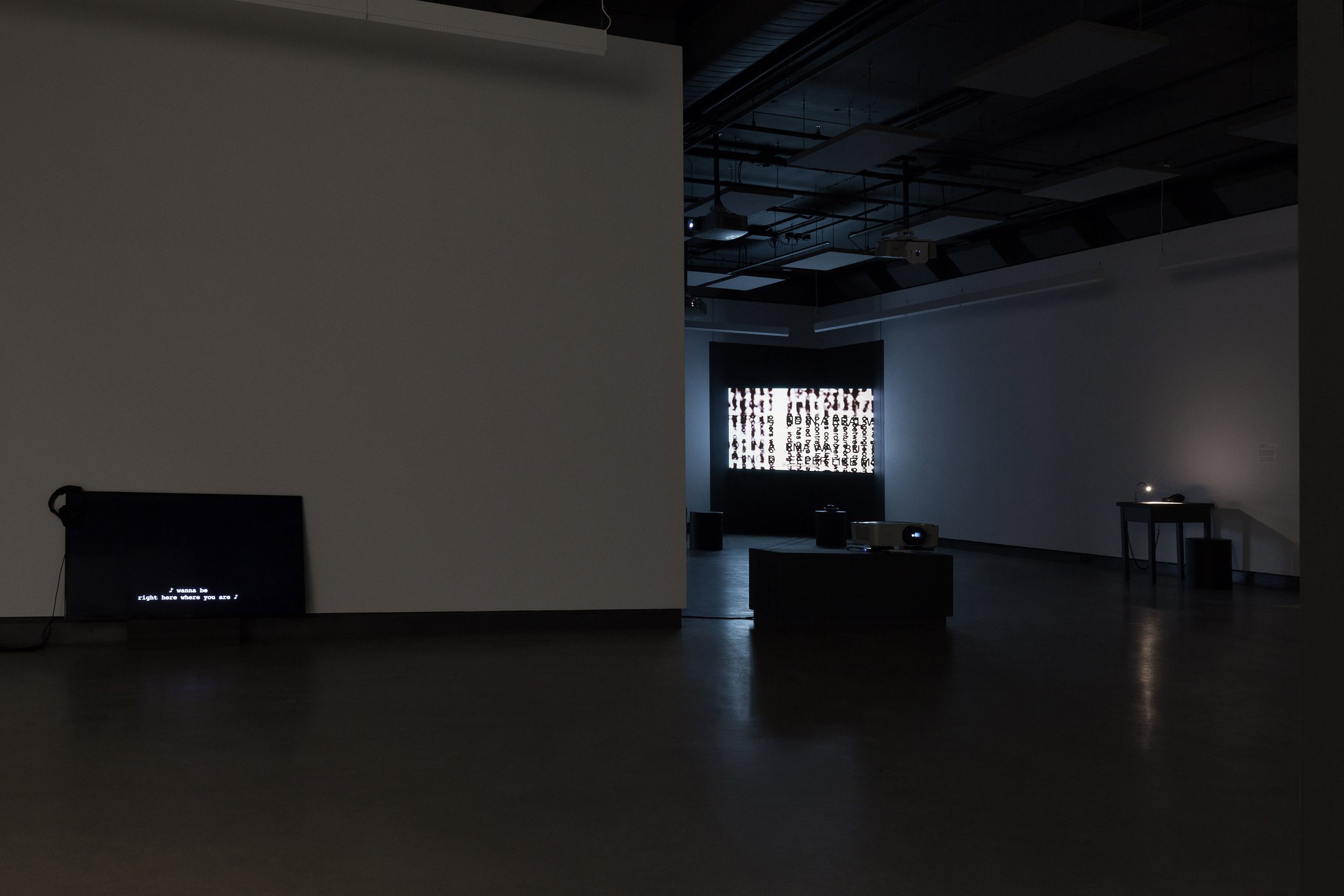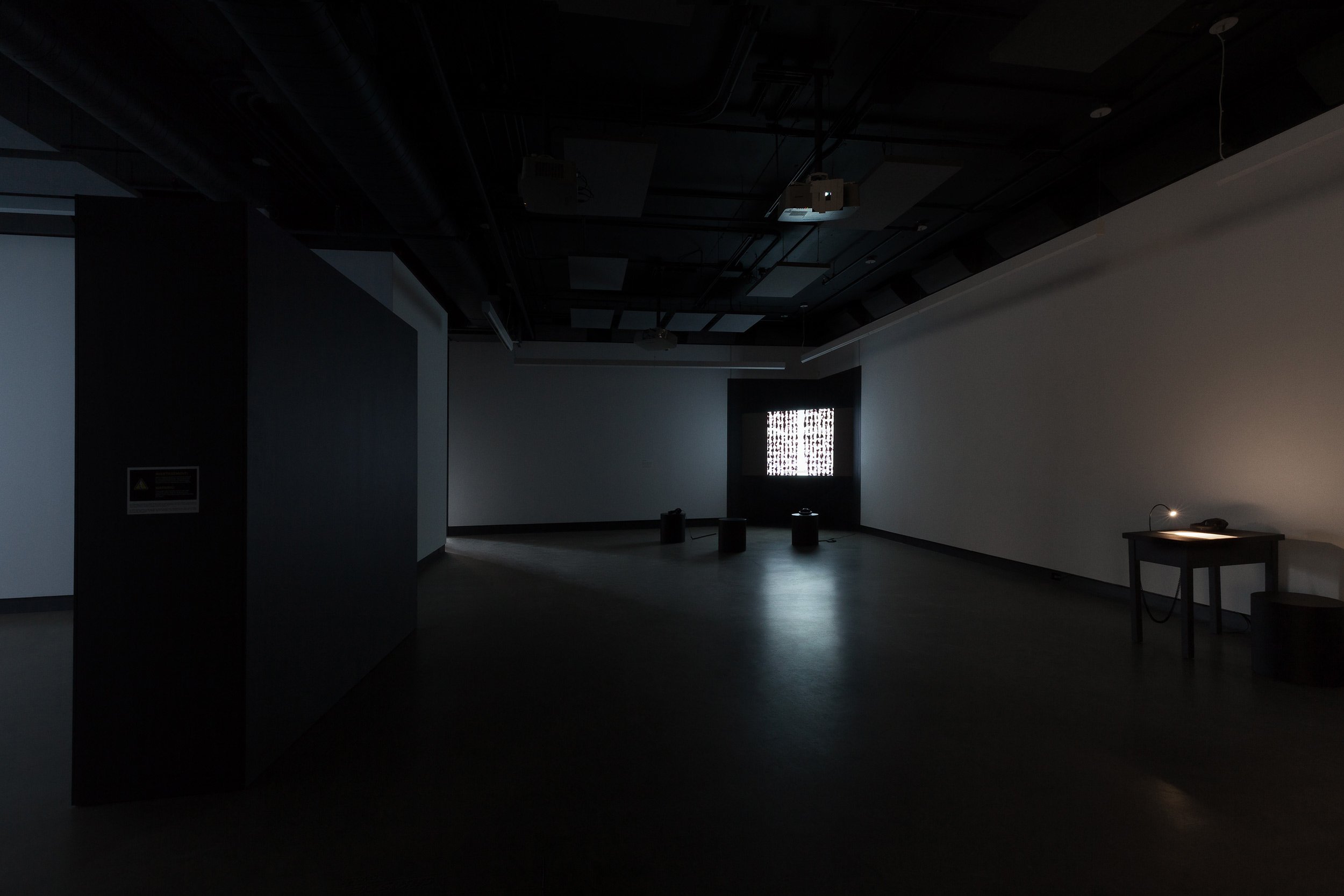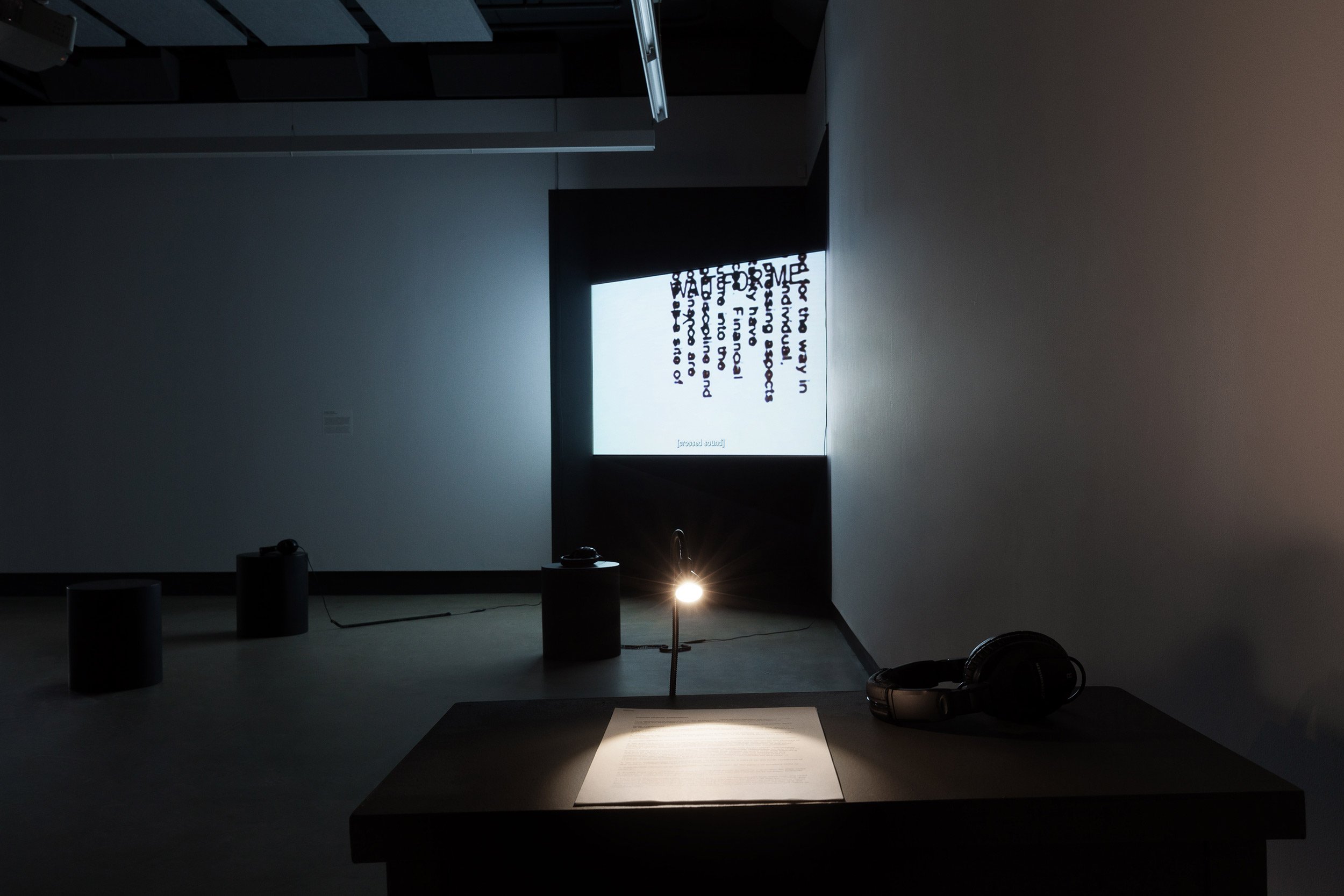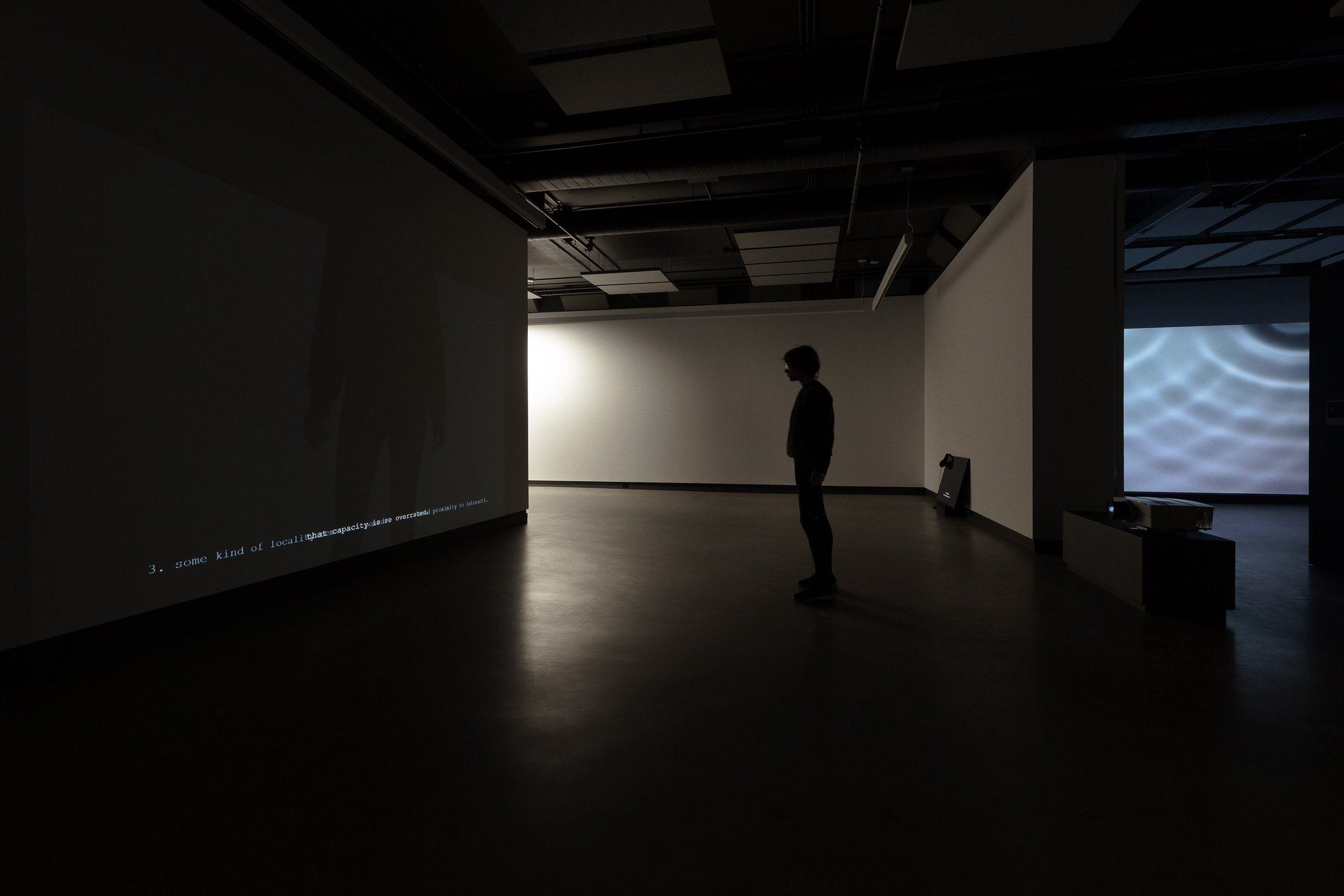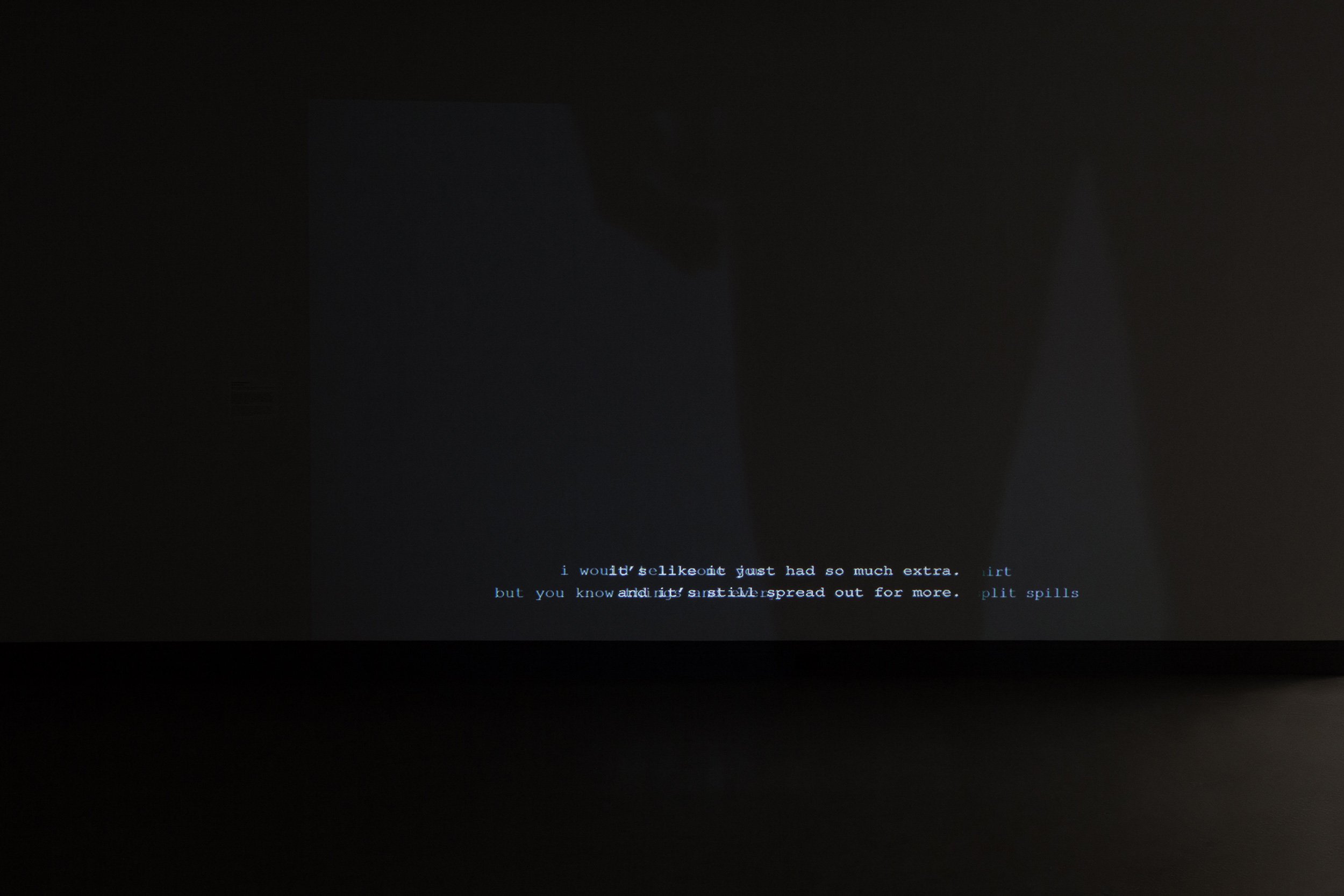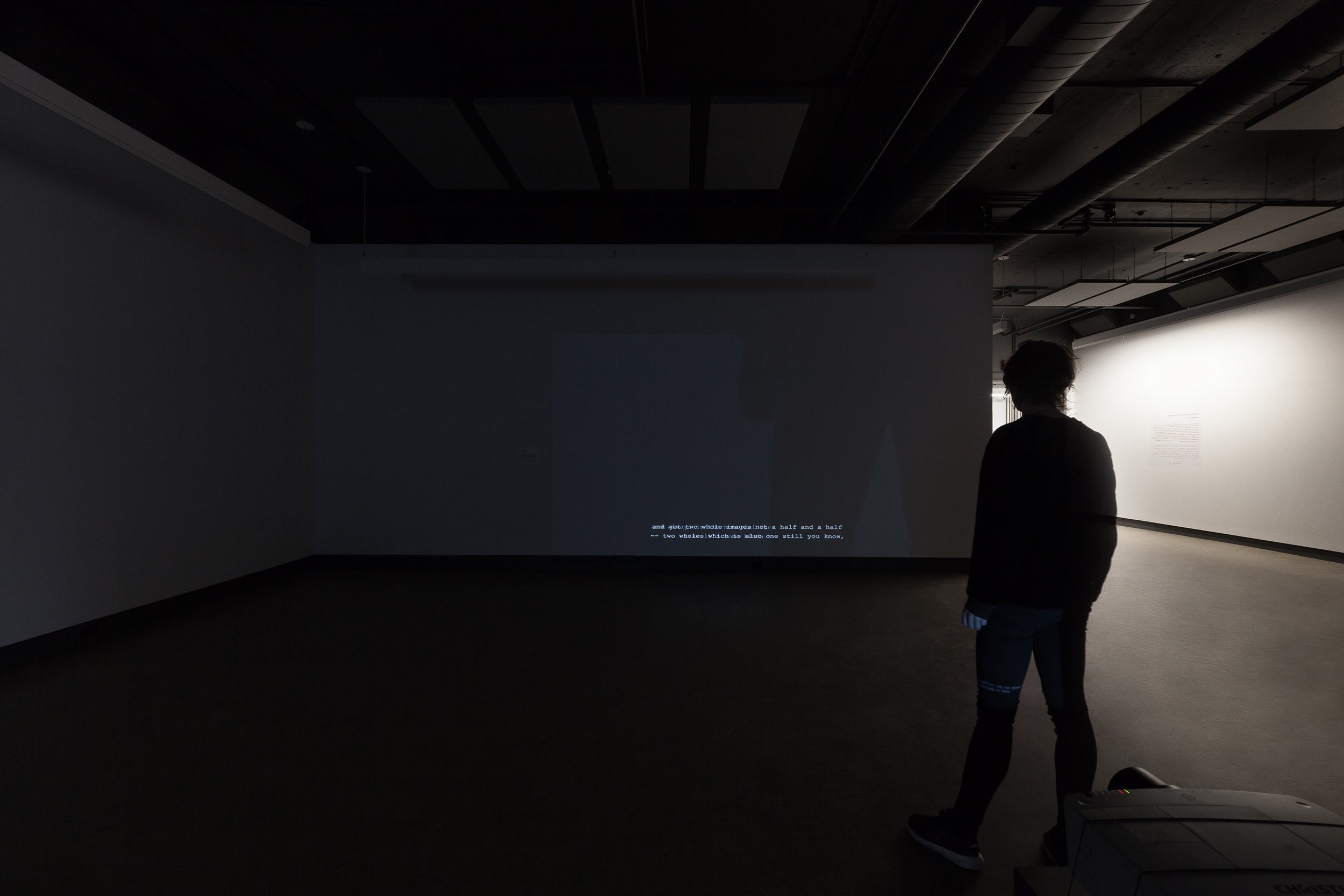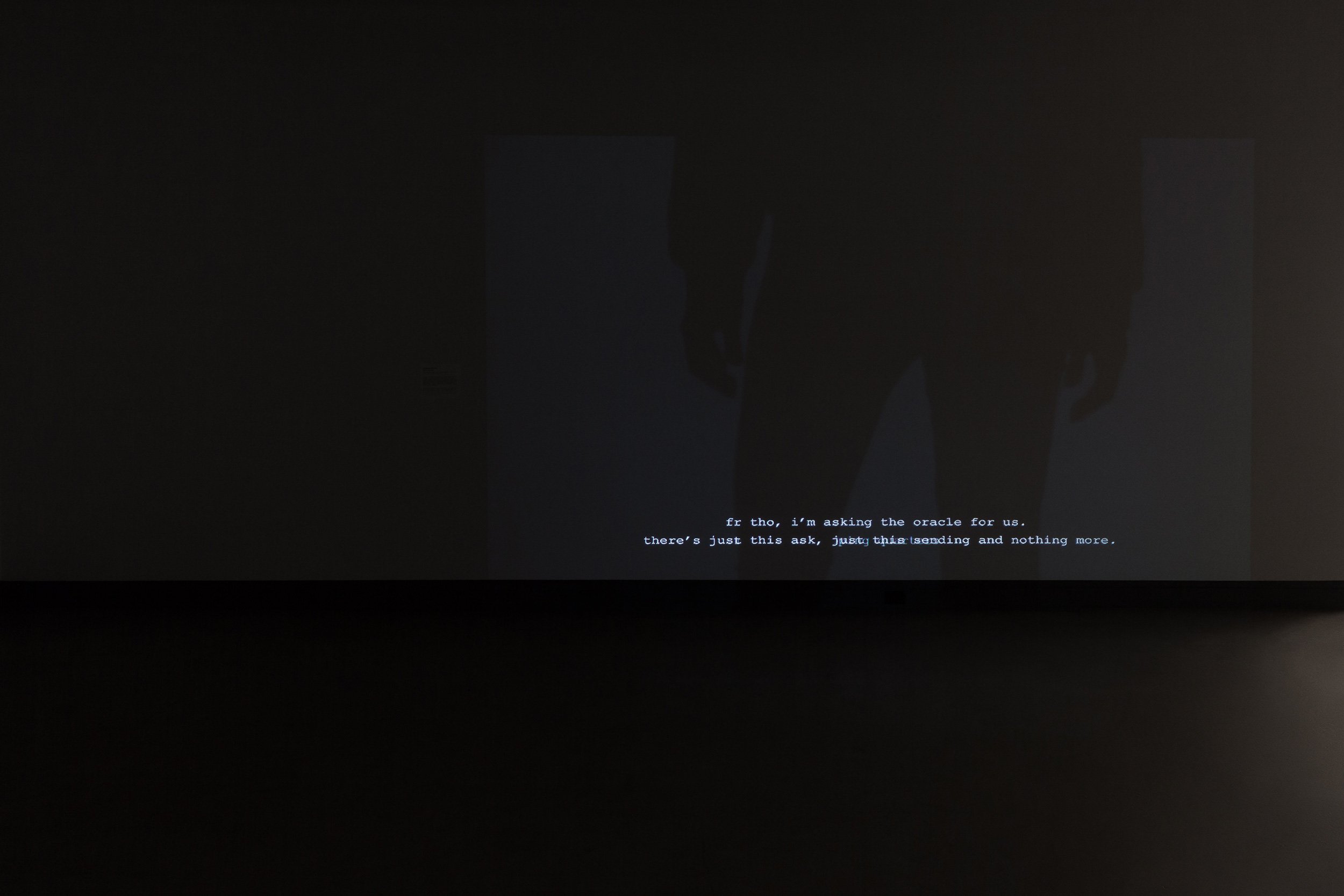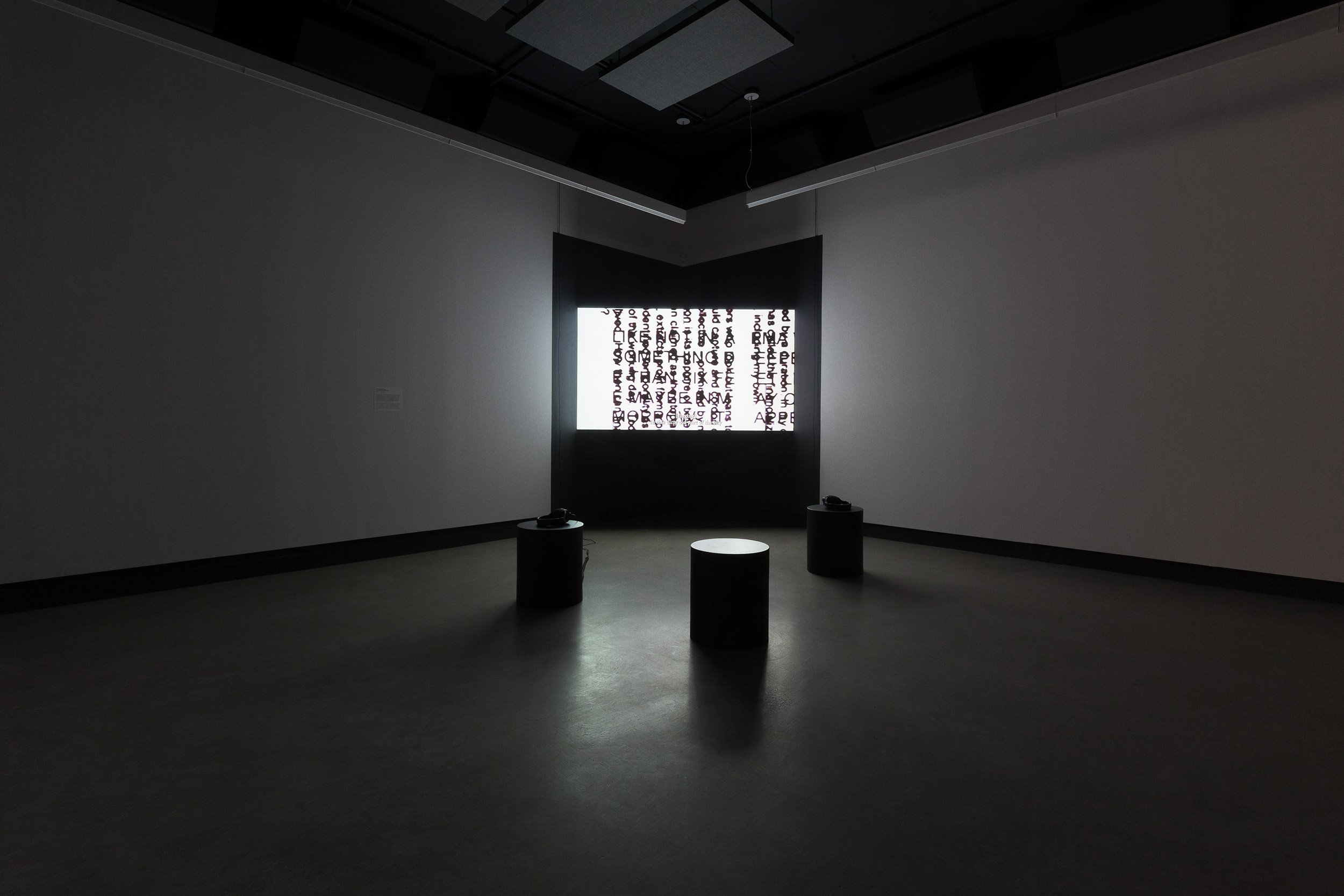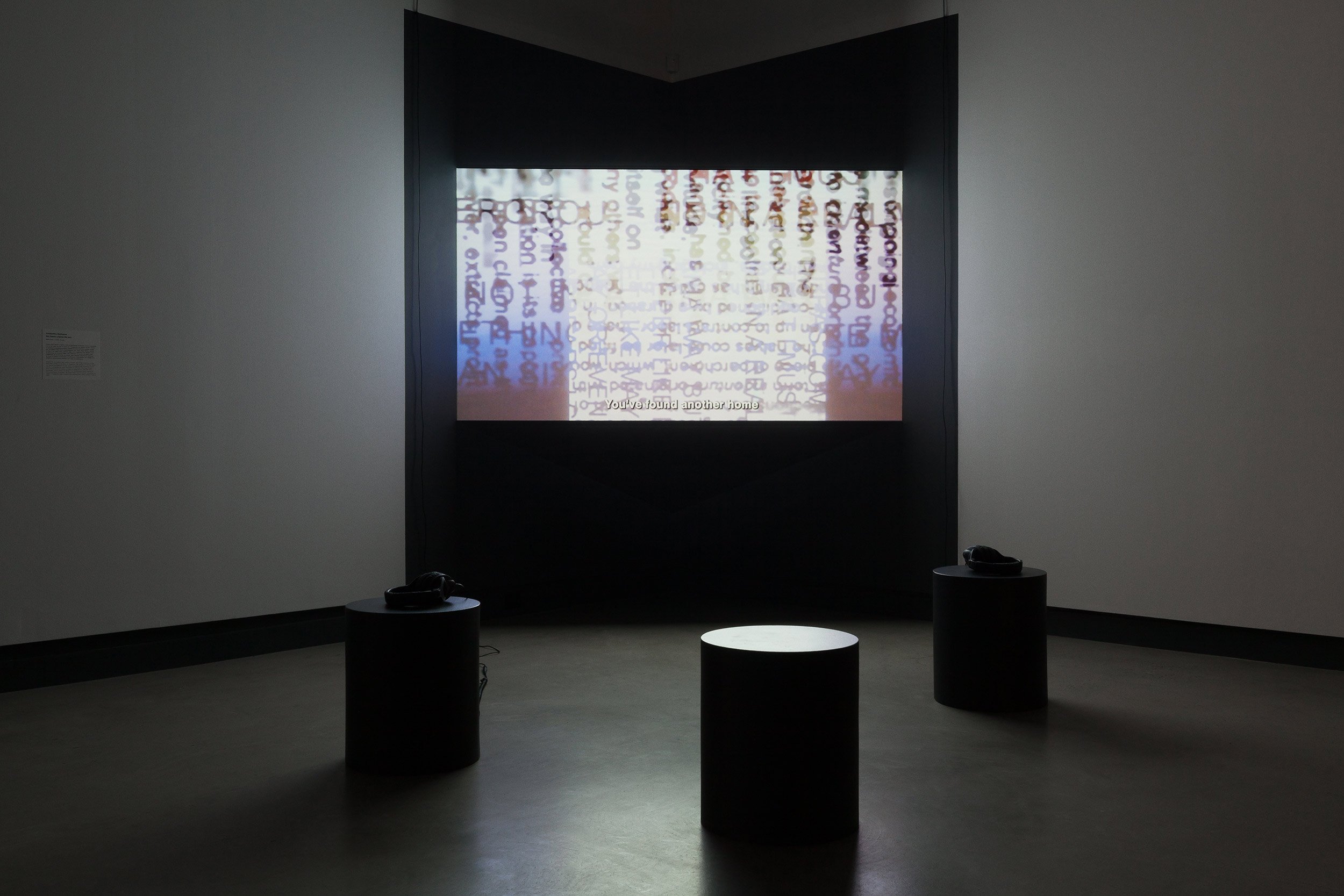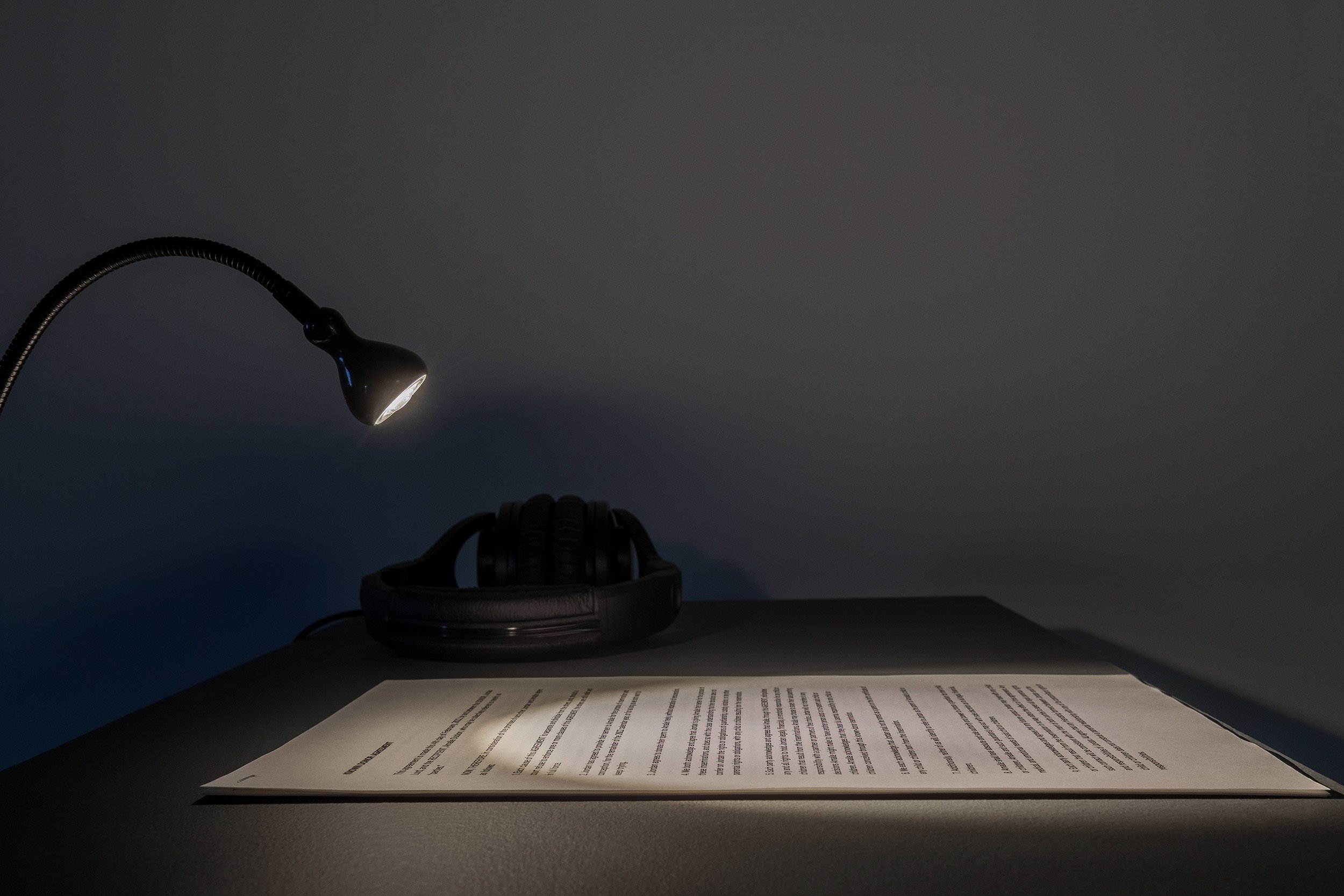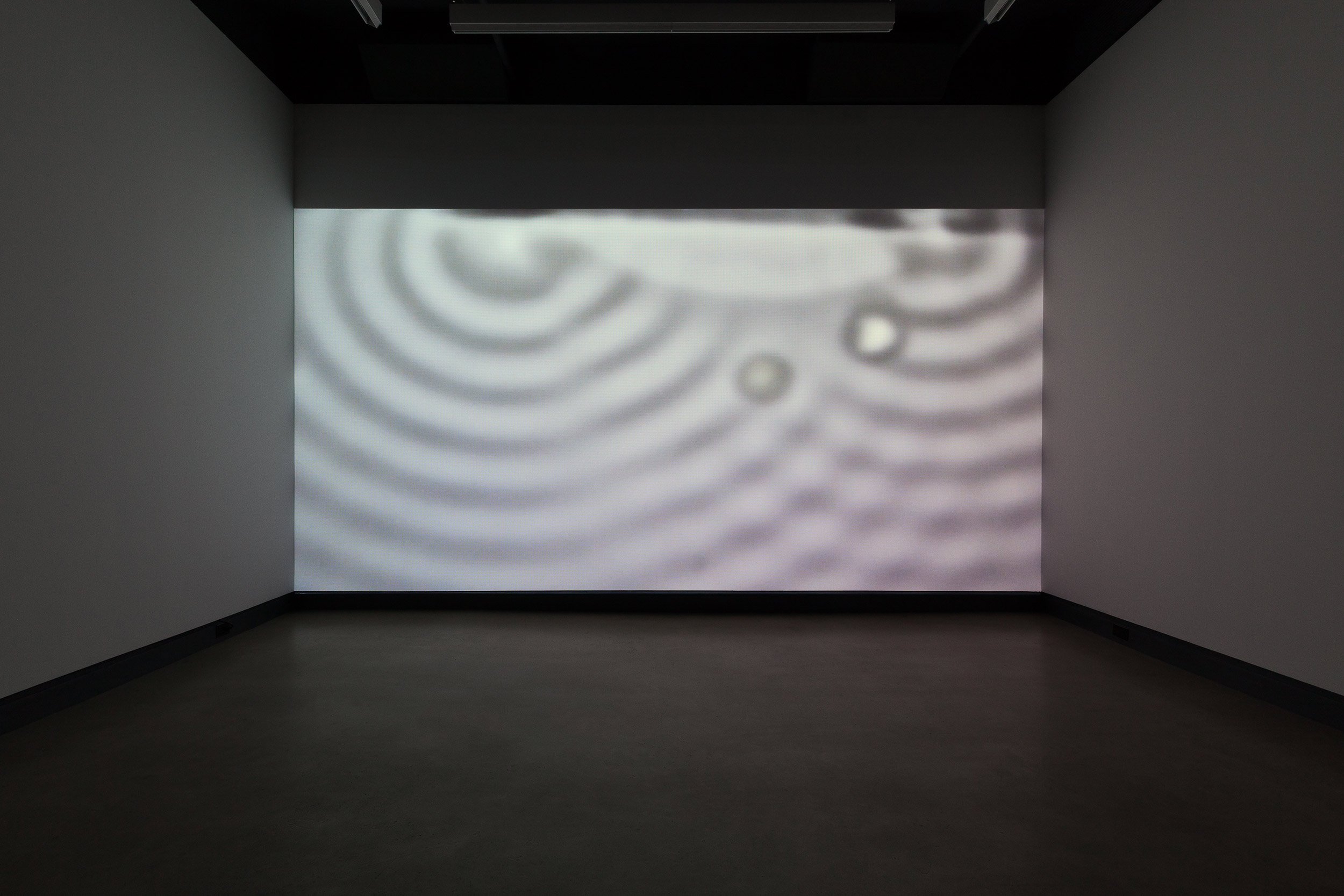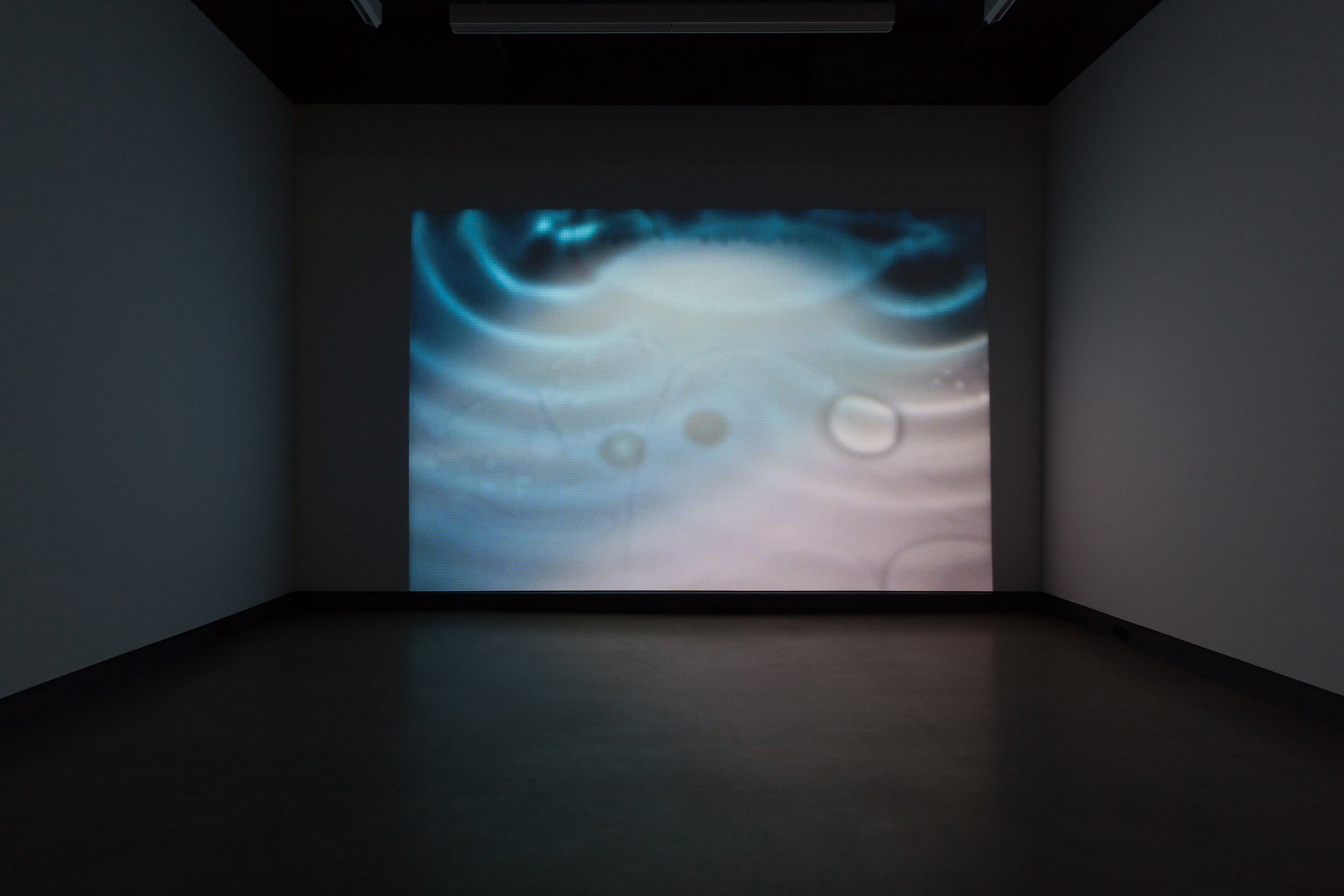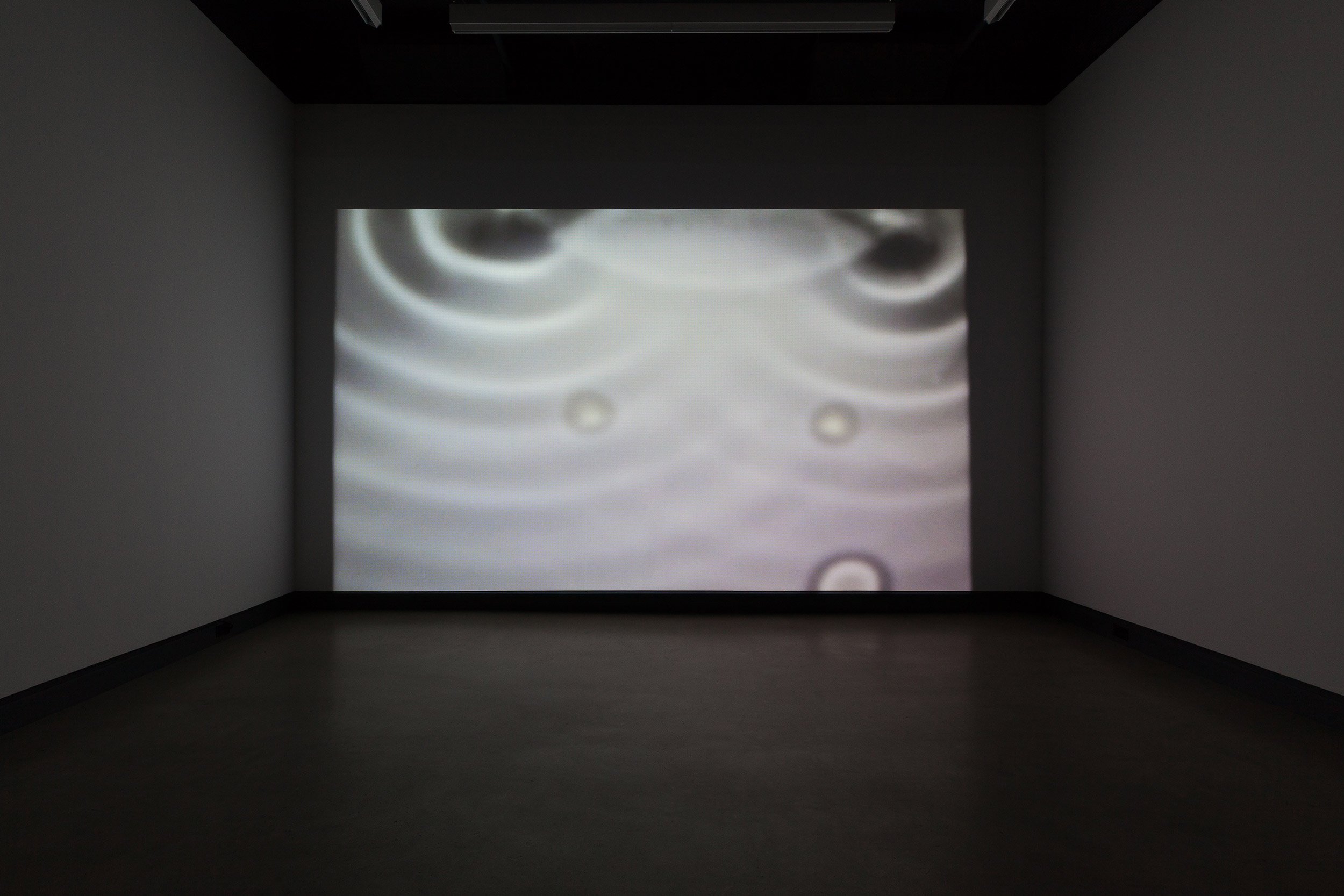Amalle Dublon and Constantina Zavitsanos
Flux Incapacitor
From February 10 to April 2, 2022
Flux Incapacitor: Amalle Dublon & Constantina Zavitsanos brings together a series of collaborative and solo works by the artists, which advocate that dependency, debt, and care are forms of abundance rather than lack. In taking up dependency, they propose an imaginary of quantum physics, in which entanglement, interference, and observer-dependent phenomena compromise the separability of knowledge. The artists explore these ideas through sound, light, materiality and movement, extending its application to ways of living, through language and love, in turn, imaging susceptibility as a form of resistance.
In the collaborative video work April 4, 1980, captions are the central medium. Though integral to the accessibility of content for some, captions are broadly considered an obligatory add-on or even an aesthetic annoyance. Here, the captions are slowed to the real time required to read them, whereas the text in captions typically races to keep up with spoken dialogue. And, because the audio is distorted to the point of incomprehensibility, the experience of D/deaf, hard of hearing, and hearing audiences are brought closer together.
Zavitsanos’ All the time points out that “interference makes things”. Two textual videos are projected onto each other rendering them illegible. When someone moves through the installation, the unit is split: one video is blocked, rendering the other legible. This mechanism materializes ideas shared by the text itself, where an ambiguous narrator tenderly addresses an equally ambiguous other, ruminating that “some things get bigger the more you take away,” imploring a paradigm of abundance.
Made available as both a text and an audio recording, Known Donor Agreement is the contract collaboratively written between Amalle Dublon and their sperm donor, Jordan Lord. Standard Known Donor Agreements are often meant to sever parental claims or obligations, hushing the indeterminacies related to conception, pregnancy and child care. The present text, however, works against its own contractualism, writing in mutual-understandings that attempt to question the temporality of consent, and to hold or open space for possibility, care, and risk management.
A composition of waters (adjusted to fit) simulates the pattern from Davisson-Germer's 1927 experiment, in which a single light beam is directed through a screen with two slits, creating two beams that interfere with each other, making a vibration of concentric circles seen in the work. This pattern is projected on water onto which oil is then dropped, referencing the protective magic used to ward off the evil eye. The artists combine science and ritual, relaying that phenoma, observation, and measurement are not separable or absolute, but rather, dependent, susceptible, and entangled.
Constantina Zavitsanos’ Girl there’s a better life brings attention to that which does operate in the place of incapacity. The contents of the two letters are layered perpendicular to each other, the oppositional direction of text making it illegible — but also irrevocably in relation. This image slides, going from blurred to focused, at times as though it is a specimen under a microscope, and at others, as though it is incrementally being rendered by live surveillance technology. Two upbeat songs fade in and out, enveloping the image’s illegibility with a protest-like optimism that points towards “a better life”.
Amalle Dublon received a PhD in Literature from Duke University, where their dissertation brought questions of sound and aurality to bear on queer and feminist thought. Amalle Dublon's writing has appeared in Artpapers, GLQ: A Journal of Lesbian and Gay Studies, ATM Mag, and TDR: The Drama Review, among other publications. They helped to organize I wanna be with you everywhere, a gathering of disabled artists and writers at Performance Space and the Whitney Museum, in 2019. With Constantina Zavitsanos, they have exhibited work at Artists Space in New York and MMK in Frankfurt. Dublon teaches at the New School.
Constantina Zavitsanos works in sculpture, performance, text, and sound to elaborate debt, dependency, and means beyond measure. Zavitsanos has exhibited at the New Museum, Brooklyn Museum, Artists Space, The Kitchen, and Participant Inc (New York), at Arika (Glasgow), and HKW (Berlin). With Park McArthur, they wrote “Other Forms of Conviviality” in Women & Performance (Routledge), and “The Guild of the Brave Poor Things” in Trap Door: Trans Cultural Production and the Politics of Visibility (MIT Press). Zavitsanos is the 2021 recipient of the Roy Lichtenstein Award from the Foundation for Contemporary Arts and the 2022 Keith Haring Fellow in Art & Activism at Bard College.
Jordan Lord is a filmmaker, writer, and artist. Their work addresses the relationships between historical and emotional debts, framing and support, access and documentary. Their films have been shown at festivals and venues including MoMA Doc Fortnight, I wanna be with you everywhere at Performance Space NY, Union Docs, and the Berwick Film and Media Arts Festival, and they have presented solo exhibitions at Piper Keys and Artists Space. Their work has been featured in publications such as Artforum, Screen Slate, Art in America, and Hyperallergic. They are currently a Visiting Assistant Professor at Colgate University in the Film and Media Studies program.
Other exhibition
Anna Hawkins
From February 10 to April 2, 2022
Dazibao thanks the artists for their generous collaboration as well as its advisory programming committee for its support.
Dazibao receives financial support from the Conseil des arts et des lettres du Québec, the Canada Council for the Arts, the Conseil des arts de Montréal, the Ministère de la Culture et des Communications and the Ville de Montréal.
Dazibao acknowledges that we are located on unceded territory of the Kanien'kehá: ka Nation and that Tiohtiá: ke / Montreal is historically known as a gathering place for many First Nations, and today, is home to a diverse population of Indigenous as well as other peoples.

